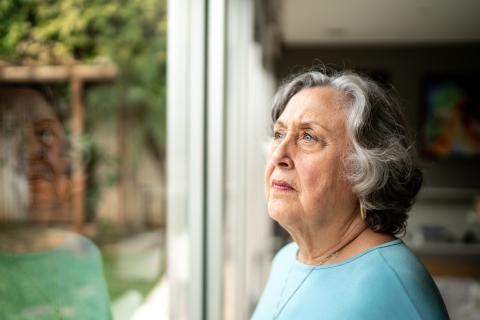Dealing with Seasonal Depression
Some seasonal changes are normal for humans living away from the equator. There is less sunshine during the day, and we may feel a natural slow down during winter. But for some people, these emotional changes are more serious than just a temporary and occasional bad mood. When the changing seasons affect a person’s mood so much that they are unable to handle daily activities, that could be a sign of seasonal depression, also known as seasonal affective disorder (SAD).
“SAD is clinical depression—that’s one thing that’s commonly not understood,” says Kelly J. Rohan, Ph.D., professor and director of clinical training in the Department of Psychological Science at the University of Vermont.
“Most people have some symptoms in winter, especially at high latitudes,” she says. “The only thing that makes it different from regular depression is that it resolves as the seasons change.”
More than just the “winter blues,” seasonal affective disorder is a type of depression that occurs seasonally, usually for about four to five months, and regularly year over year. While the condition is associated primarily with winter, some people experience summer-pattern seasonal affective disorder. People who have SAD may find themselves experiencing changes in their sleep patterns, such as sleeping a lot more or having trouble falling asleep and staying asleep. Another symptom of SAD is changes in a person’s diet, such as eating a lot more or craving carbohydrates. And then when winter is over, someone with SAD bounces back to their typical level of emotional regulation.
What do we know about who is at risk of seasonal affective disorder? Scientists know that where someone lives relative to the equator is a factor. We know that exposure to sunshine helps our bodies produce serotonin, the “happiness chemical.” Within the United States, someone living in Florida is much less likely to have seasonal affective disorder than someone living in upstate Maine. Or perhaps a person would develop SAD after moving from a southern state with lots of sunshine to a northern state with long winters and less sunshine. This condition also disproportionally affects women.
To be diagnosed with seasonal affective disorder, a person would need to exhibit the symptoms for at least two years in a row and discuss symptoms with a health care professional. The good news is that treatment is available. There are a few different approaches to treating seasonal affective disorder. These treatments include light therapy, psychotherapy, medication and vitamin D supplements. Light therapy is a treatment that mimics exposure to sunlight. A person sits in front of a light box that emits bright light approximately 20 times as powerful as natural sunlight for 30 to 45 minutes each day. Cognitive behavioral therapy can also help. And if those treatments don’t achieve the desired outcomes, there are medications that may help with seasonal affective disorder.
Older adults are at increased risk of depression. There is a stereotype that aging brings with it depression, but that’s not true. Older adults who are experiencing seasonal depression should consult with their doctor about their treatment options.
The information in this article is not intended to replace the advice of your doctor. If you have questions about your health, consult your health care provider.
